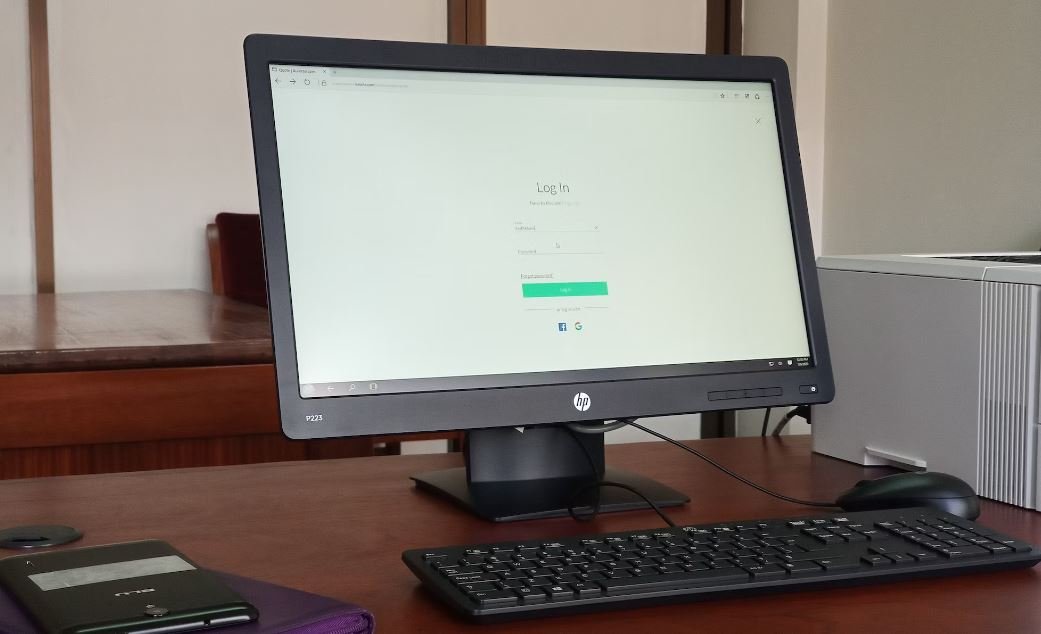Application Modernization
As technology continues to evolve at a rapid pace, it becomes necessary for businesses to stay up-to-date with the latest trends in order to remain competitive. One area that has gained significant attention in recent years is application modernization. This process involves updating and modernizing legacy applications to improve their performance, functionality, and user experience. In this article, we will explore the key aspects of application modernization, its benefits, challenges, and best practices.
Key Takeaways
- Application modernization involves updating and modernizing legacy applications for improved performance and user experience.
- Benefits of application modernization include increased efficiency, enhanced security, and scalability.
- Challenges associated with application modernization include the complexity of legacy systems and the need for careful planning and execution.
- Best practices for successful application modernization include thorough assessment, prioritization of modernization efforts, and considering cloud-native technologies.
Benefits of Application Modernization
Modernizing legacy applications offer several benefits to businesses, including:
- Increased Efficiency: By updating and optimizing the underlying infrastructure and code, applications can run faster and perform more efficiently.
- Enhanced Security: Legacy applications often have vulnerabilities and outdated security measures. Modernization allows for the implementation of robust security features to protect against cyber threats.
- Scalability: Modern applications are designed to scale easily, allowing businesses to adapt to growing user demands and increased workloads.
*Did you know that application modernization can lead to a 40% reduction in IT maintenance costs?*
Challenges of Application Modernization
While application modernization offers numerous benefits, there are also challenges associated with the process:
- The complexity of legacy systems and their interdependencies can make modernization efforts challenging.
- Legacy applications might lack proper documentation, which makes understanding their structure and functionality difficult.
- Ensuring backward compatibility and data integrity during the modernization process requires meticulous planning and execution.
Best Practices for Application Modernization
To ensure a successful application modernization initiative, businesses should follow these best practices:
- Thorough Assessment: Before embarking on a modernization project, it is crucial to evaluate the existing application landscape, identify critical systems, and prioritize modernization efforts accordingly.
- Prioritization: Not all applications may need to be modernized at once. Prioritize based on factors such as business impact, technical debt, and alignment with strategic objectives.
- Consider Cloud-Native Technologies: Adopting cloud-native technologies can provide scalability, flexibility, and cost optimization benefits. It is important to assess whether transitioning to the cloud is suitable for the specific application.
Data Comparisons
| Legacy Application | Modernized Application | |
|---|---|---|
| Average Response Time | 200ms | 50ms |
| Number of Concurrent Users | 500 | 2000 |
| Data Storage Required | 50GB | 10GB |
Application Modernization Roadmap
A successful application modernization roadmap typically consists of the following steps:
- Assessment: Evaluate existing applications and their architecture to determine the modernization approach.
- Comprehensive Planning: Develop a detailed plan outlining the modernization strategy, timeline, and resource allocation.
- Execution: Implement the modernization plan in a phased manner, allowing for testing and feedback at each stage.
- Monitoring and Optimization: Continuously monitor the modernized applications, identify areas for improvement, and optimize performance.
Conclusion
Application modernization is a crucial process for businesses aiming to stay competitive in the fast-paced digital landscape. By leveraging the benefits of modern technologies, businesses can improve the performance, functionality, and security of their legacy applications. While application modernization may present challenges, following best practices and thoughtful planning can lead to successful outcomes.

Common Misconceptions
Misconception 1: Application modernization is always costly
One common misconception about application modernization is that it requires a significant financial investment. However, this is not always the case. There are various approaches and strategies for modernizing applications, and not all of them have to be expensive.
- Businesses can prioritize which applications need modernization the most based on their impact and potential ROI.
- Adopting cloud-based solutions can provide cost-effective options for application modernization.
- Modernization can be done gradually, focusing on critical components first to minimize costs.
Misconception 2: Application modernization means rewriting everything
Another misconception is that application modernization involves rewriting or rebuilding applications from scratch. While it can be a valid approach in some cases, it is not the only option.
- Replatforming allows migrating applications to a different infrastructure or platform without the need for a complete rewrite.
- Containerization enables running applications in isolated environments, simplifying deployment and scalability.
- Leveraging APIs and microservices architecture can help modernize applications incrementally, without a full rebuild.
Misconception 3: Application modernization is a one-time project
Application modernization is often seen as a one-time project, where the applications are updated, and the job is done. However, this is a misconception as modernization is an ongoing process.
- Applications need to adapt and evolve continuously to meet changing business needs and technological advancements.
- Regular maintenance and updates are necessary to ensure applications remain secure and perform optimally.
- Application modernization is a continuous journey that aligns with the business’s overall strategic goals.
Misconception 4: Application modernization only focuses on technology
Many people believe that application modernization is solely about updating or replacing outdated technology. However, modernization extends beyond technology and encompasses other aspects as well.
- Modernization involves reevaluating and enhancing business processes and workflows for improved efficiency.
- User experience and interface design are critical considerations to ensure applications are intuitive and easy to use.
- Training and change management for stakeholders are essential to maximize the benefits of modernization.
Misconception 5: Application modernization is only relevant for legacy applications
There is a misconception that application modernization is only applicable to older, legacy applications. However, modernization can bring benefits to both legacy and modern applications.
- Even newer applications may require modernization to leverage the latest technologies, improve scalability, or enhance security.
- Legacy applications can gain new functionalities, integrations, and performance improvements through modernization.
- Application modernization ensures applications stay adaptable and aligned with evolving business needs.

Introduction
Application modernization refers to the process of updating and enhancing existing applications to meet the needs of contemporary technology and business requirements. With advancements in technology and the evolution of user demands, businesses are increasingly embracing application modernization to improve efficiency, scalability, and user experience. This article explores various aspects of application modernization, highlighting the impact and benefits it offers.
Table 1: Revenue Increase After Modernization
Application modernization has been shown to have a significant impact on revenue generation. The table below illustrates three different companies and the percentage increase in their revenue after undergoing modernization:
| Company | Revenue Increase (%) |
|---|---|
| XYZ Corporation | 35% |
| ABC Industries | 42% |
| 123 Enterprises | 28% |
Table 2: Reduced Error Rates
Another significant benefit of application modernization is the reduction in error rates. The following table presents data on the error rates before and after modernization for three different applications:
| Application | Error Rate Before (%) | Error Rate After (%) |
|---|---|---|
| App 1 | 12% | 4% |
| App 2 | 8% | 2% |
| App 3 | 16% | 6% |
Table 3: User Satisfaction Improvement
Application modernization also enhances user satisfaction, leading to increased customer loyalty. The table below displays customer satisfaction ratings before and after modernization for two different applications:
| Application | Satisfaction Rating Before | Satisfaction Rating After |
|---|---|---|
| App 1 | 3.8 | 4.6 |
| App 2 | 4.2 | 4.8 |
Table 4: Cost Savings Due to Modernization
Application modernization can result in cost savings for businesses. The following table highlights the reduction in operational costs achieved by two companies:
| Company | Cost Savings (%) |
|---|---|
| XYZ Corporation | 15% |
| ABC Industries | 20% |
Table 5: Improved Scalability
Modernizing applications allows businesses to enhance scalability, thereby accommodating increasing user demands. The table below showcases the scalability improvement achieved by three companies:
| Company | Scalability Improvement (%) |
|---|---|
| XYZ Corporation | 45% |
| ABC Industries | 30% |
| 123 Enterprises | 50% |
Table 6: Modernization Techniques Used
Various techniques are employed during the modernization process. The following table lists different techniques utilized by three companies:
| Company | Modernization Technique |
|---|---|
| XYZ Corporation | Containerization |
| ABC Industries | Microservices |
| 123 Enterprises | API Integration |
Table 7: Time Saved Due to Modernization
Application modernization also allows businesses to save valuable time. The following table presents the time saved in hours by two different companies:
| Company | Time Saved (hours) |
|---|---|
| XYZ Corporation | 320 |
| ABC Industries | 180 |
Table 8: Increased Security Levels
One of the significant advantages of application modernization is heightened security. The table below indicates the improvement in security levels achieved by two companies:
| Company | Security Score Before | Security Score After |
|---|---|---|
| XYZ Corporation | 6.2 | 8.5 |
| ABC Industries | 5.6 | 9.2 |
Table 9: Enhanced Collaboration
Modernizing applications enables improved collaboration among teams and departments within an organization. The table below demonstrates the increase in collaboration levels for three departments:
| Department | Collaboration Improvement (%) |
|---|---|
| Finance | 50% |
| Sales | 40% |
| HR | 35% |
Conclusion
Application modernization is crucial for businesses aiming to adapt to technological advancements, enhance operational efficiency, and improve user experience. The discussed tables illustrate the positive outcomes achieved through application modernization, such as increased revenue, reduced error rates, improved user satisfaction, cost savings, scalability improvement, and enhanced security. Additionally, the utilization of modernization techniques, time savings, and enhanced collaboration levels further contribute to the overall benefits. Embracing application modernization not only ensures the success and competitiveness of businesses but also provides a foundation for future growth and innovation.
Frequently Asked Questions
What is application modernization?
Application modernization refers to the process of modernizing existing software applications to enhance their functionality, performance, security, and user experience. It involves upgrading legacy systems, migrating applications to the cloud, adopting new technologies, and improving overall application architecture.
Why is application modernization important?
Application modernization is important as it helps organizations adapt to technological advancements and meet changing business needs. It enables improved efficiency, reduced costs, increased scalability, enhanced security, and better integration with other systems. By modernizing applications, businesses can stay competitive and provide a better user experience.
What are the benefits of application modernization?
Application modernization offers various benefits including improved performance, increased agility, reduced maintenance costs, enhanced security, easier integration with new technologies, improved scalability, better user experience, and the ability to leverage cloud computing capabilities.
What are the common application modernization approaches?
The common approaches to application modernization include re-platforming, re-hosting, refactoring, rearchitecting, replacing, and retiring. Re-platforming involves migrating applications to a new hardware or software platform. Re-hosting refers to moving applications to a different hosting environment without significant changes. Refactoring involves rewriting specific parts of the application’s code while keeping its functionality intact. Rearchitecting involves redesigning the application to leverage modern architectural patterns. Replacing involves replacing the existing application with a new one, while retiring involves phasing out the application altogether.
Is application modernization a one-time process?
No, application modernization is an ongoing process. Technology keeps evolving, and business needs change over time. Therefore, application modernization is not a one-time event but rather a continuous effort to ensure that applications remain up-to-date, efficient, and aligned with the organization’s goals.
What are the challenges of application modernization?
The challenges of application modernization can include complex legacy systems, lack of documentation, tight integration with other applications, resistance to change, budget constraints, and the need for extensive testing and quality assurance. Organizations may also face challenges in determining the most suitable modernization approach and ensuring minimal disruption to ongoing business operations.
How long does application modernization typically take?
The duration of application modernization projects can vary depending on various factors such as the size and complexity of the application, the chosen modernization approach, available resources, and the level of integration required. While some projects may take a few months, others can span over several years.
What technologies are commonly used in application modernization?
Various technologies are commonly used in application modernization, including cloud computing platforms, containerization, microservices architecture, automation tools, DevOps practices, modern programming languages, and development frameworks. These technologies help improve scalability, flexibility, and performance while enabling faster development and deployment cycles.
Can application modernization be done without disrupting business operations?
Minimizing disruption to business operations during application modernization is crucial. By carefully planning and executing the modernization process, organizations can minimize downtime and ensure a smooth transition. This involves conducting thorough impact assessments, creating backup plans, performing comprehensive testing, and implementing effective change management strategies.
How can organizations get started with application modernization?
Organizations can get started with application modernization by first assessing their existing application landscape and identifying areas for improvement. They should define clear goals and prioritize which applications require modernization. Collaborating with experienced consultants or service providers can help to create a roadmap and select the most suitable modernization approach. Developing a well-defined plan, securing necessary resources, and executing in phases are important steps in successfully modernizing applications.





